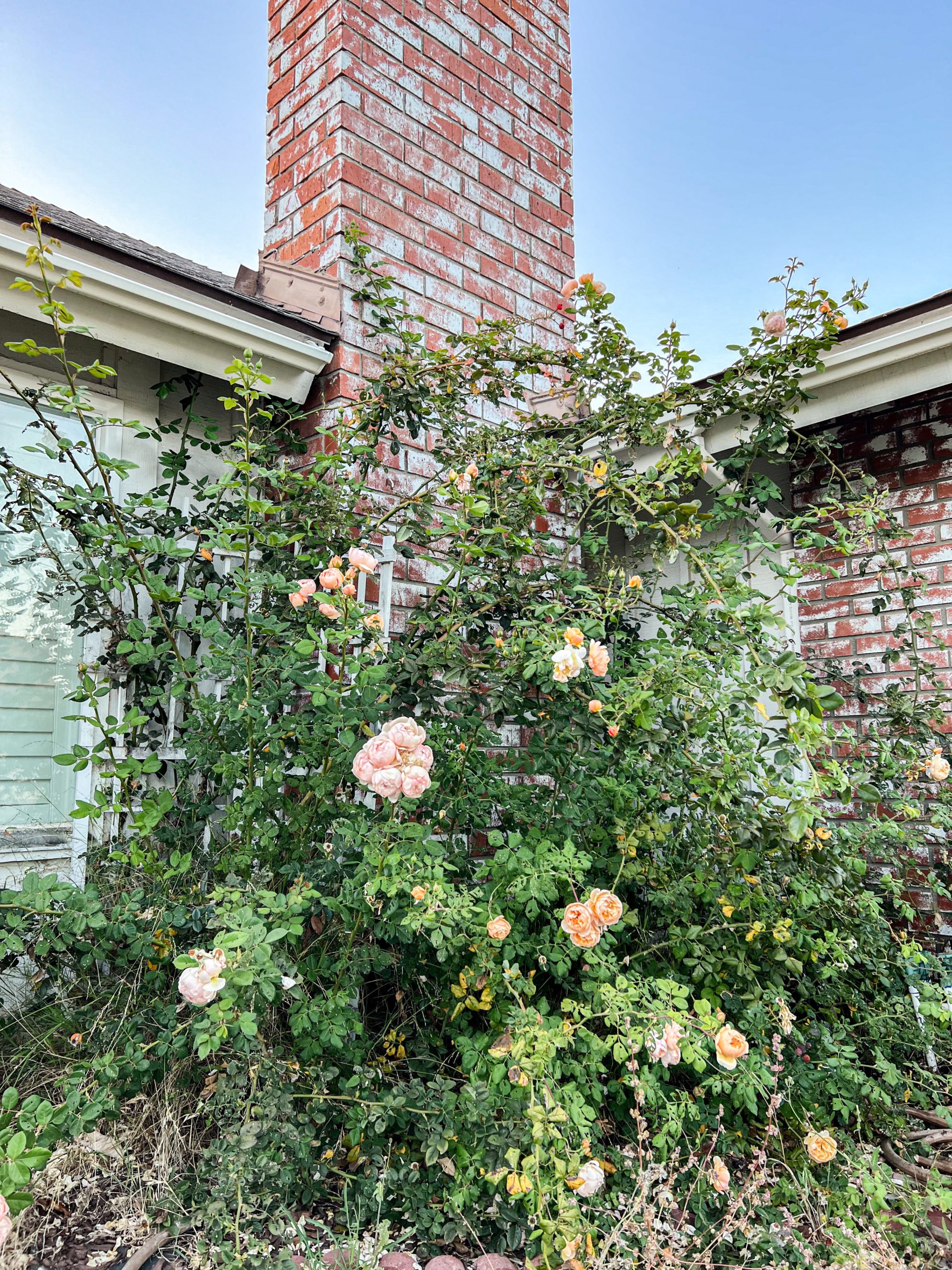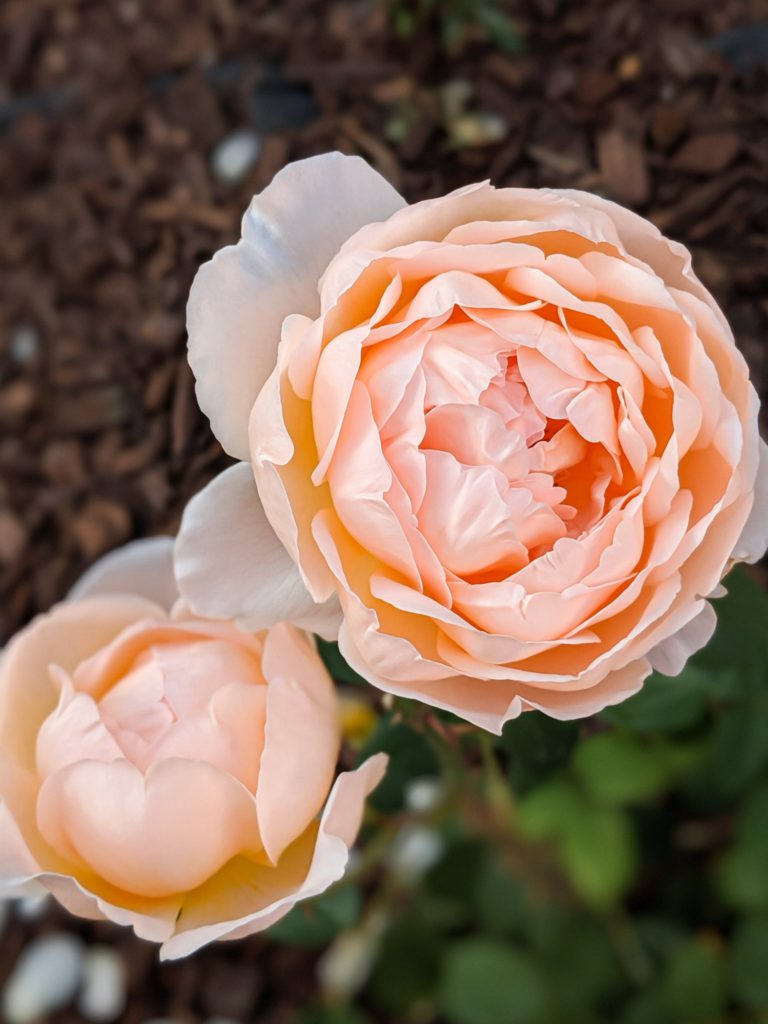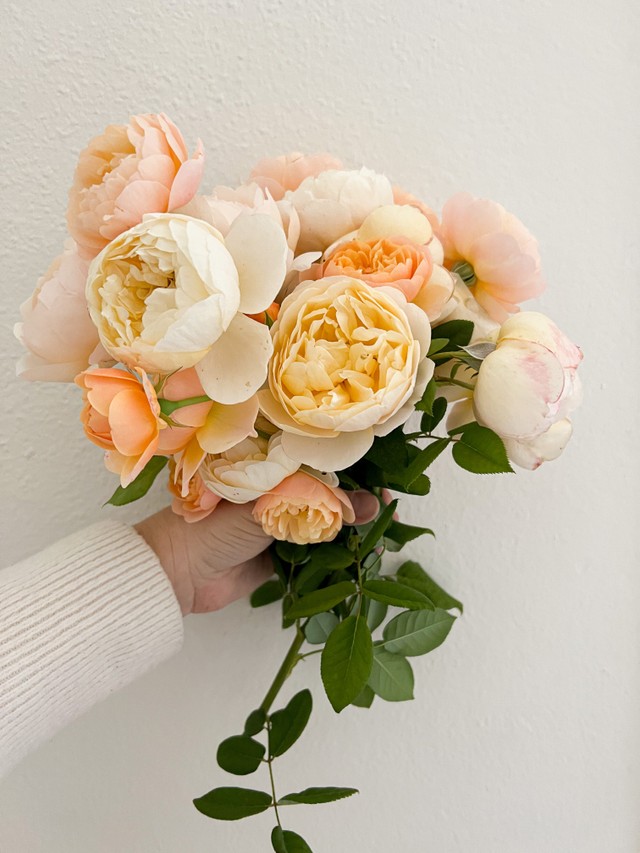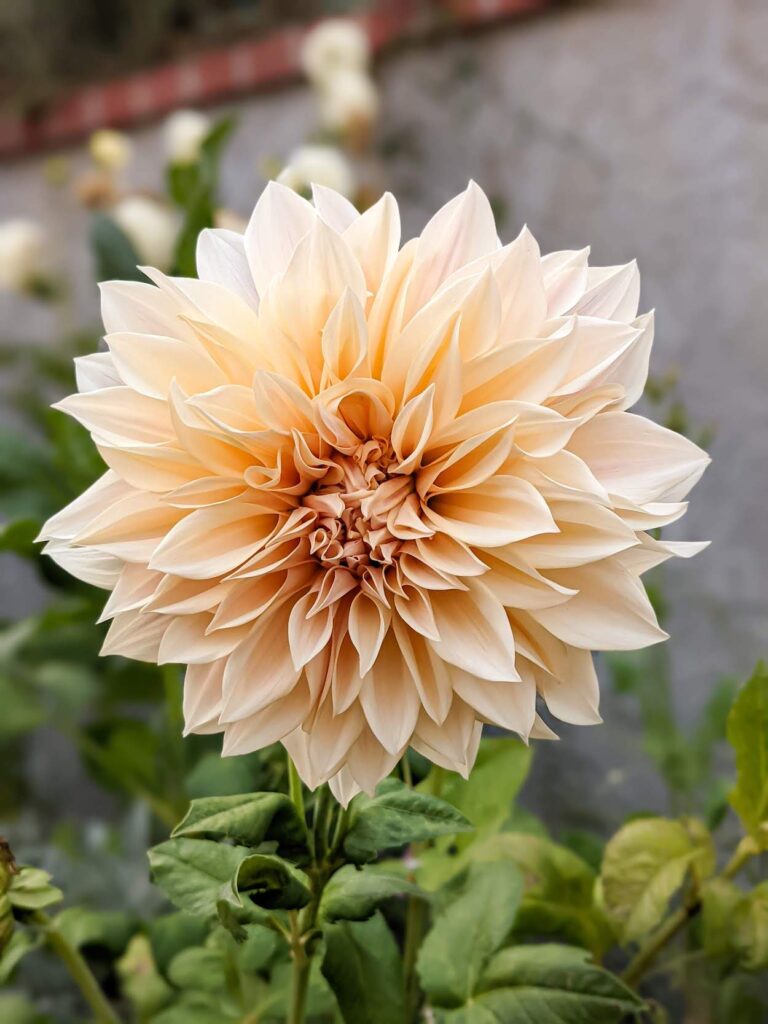Those of us growing roses in milder climates usually don’t end up pruning until January. That doesn’t mean, though, that we can use the same rose care strategies that we use during the summer months. Even if you’re not dealing with harsh winters, you still need to adjust your strategy depending on where you are in the growing season.
In fact, over the last couple of years, I have learned two key tips that have helped me improve the health of my roses. These tips will also be helpful for those of you with cool or damp fall weather, even if your winter is colder than mine.
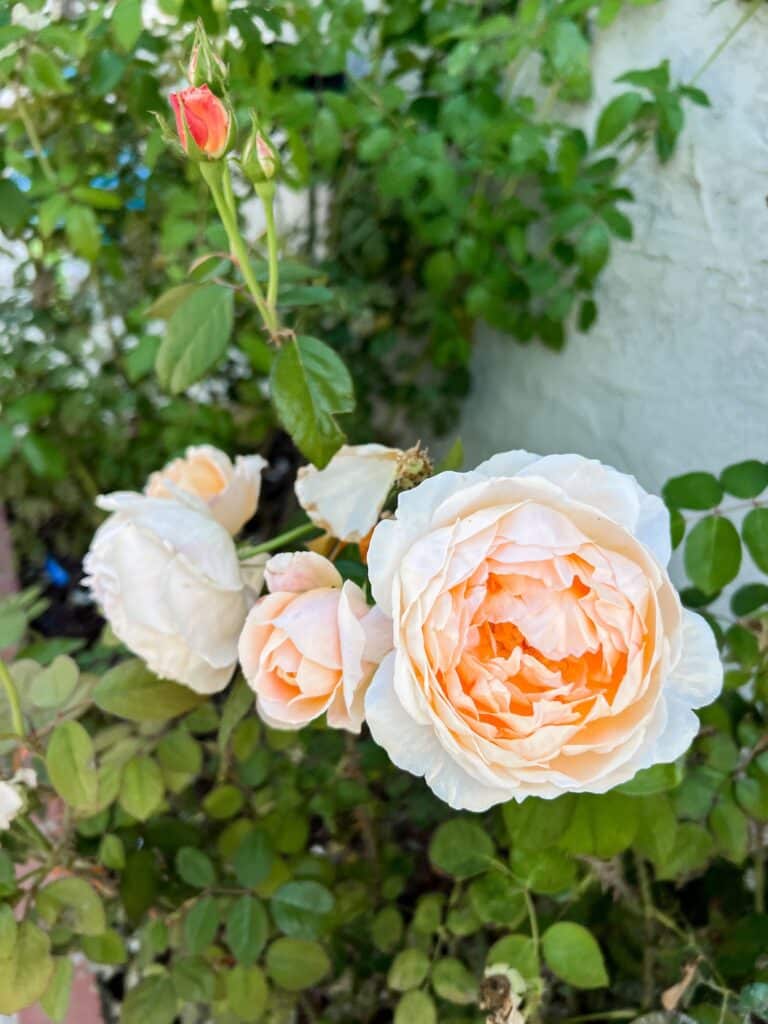
First Tip: Adjust the Angle of Your Pruning
Nearly every rose pruning guide will tell you that when you cut your rose branch, you should cut it at a 45° angle. This is true, but there’s a little more to it than that.
When you are cutting a rose branch, either because you are snipping some blooms to bring inside or trimming off deadheads, you want to angle that 45° cut so that it angles away from the growth node at the base of the leaves above which you are cutting. Here is an example of what I mean by that.
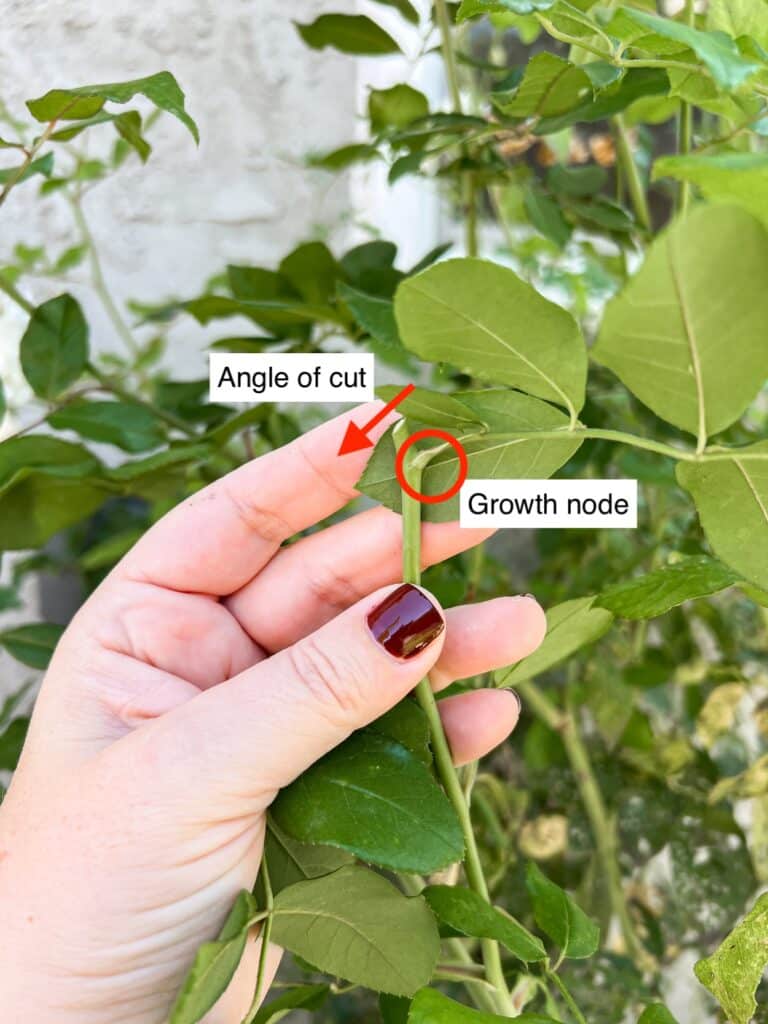
You’ll see in this photo that I have cut the rose branch just above where a cluster of leaves joins the stem. You want about a quarter inch gap between your cut and the joint. When you look at the photo, you can see that the tallest part of the angle is on the sides that is close to the joint, and the lowest part of the angle is on the side that is away from it.
Why does this matter? Well, during the cold winter months, moisture will gather on the cut stem tip and drip off of the angle you have cut the stem. If you cut it so that the water drips into the spot where the leaves join the stem, you are more likely to get moisture-induced problems at that growth point, including problems like powdery mildew or fungal diseases.
If you cut so that it angles away from that growth spot, you can keep that spot a little dryer and help preserve its health. Since that is where your rose plant is going to put out new growth, it makes sense to try to protect that point if possible. This is an easy bit of winter protection that doesn’t require any extra tools or effort.
Second Tip: Cut Above the Second Cluster of Five Leaves
This is a tip I learned from the extraordinarily skilled rose gardeners at The Huntington. Most deadheading guides will tell you that you should cut the stem above the first five-leaf cluster. This is a good strategy for the summer months, but during the autumn and winter months when you have cold weather, your rose plant might need a little extra help.
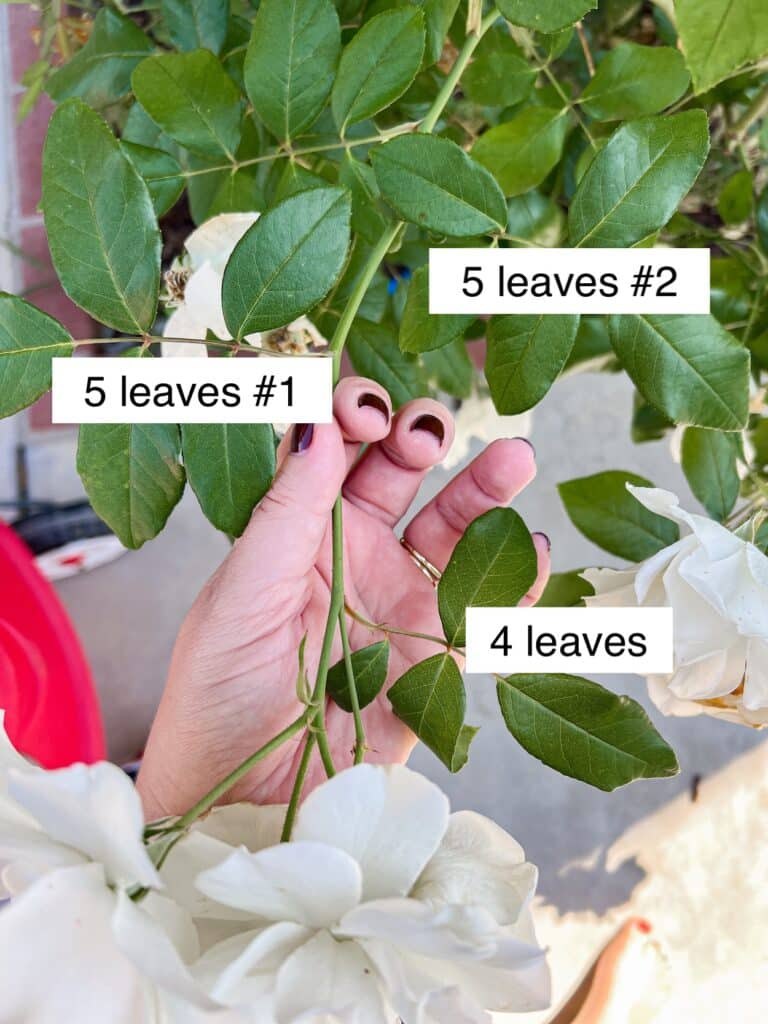
If you cut it above the second cluster of five leaves, then you will cut it at a stronger point in the stem. This will give your plant a little more support while it heals from the trimming. Because this is a stronger point, infections also will be less likely to be introduced at that spot.
Marine Layer Applications
Also, bear in mind that these tips will be helpful for those of us gardening in coastal areas that get heavy marine layers in May, June, and July. During those months, the fog creeps in early in the morning and blankets our roses in moisture. It also leads to cold temperatures compared to summer months elsewhere.
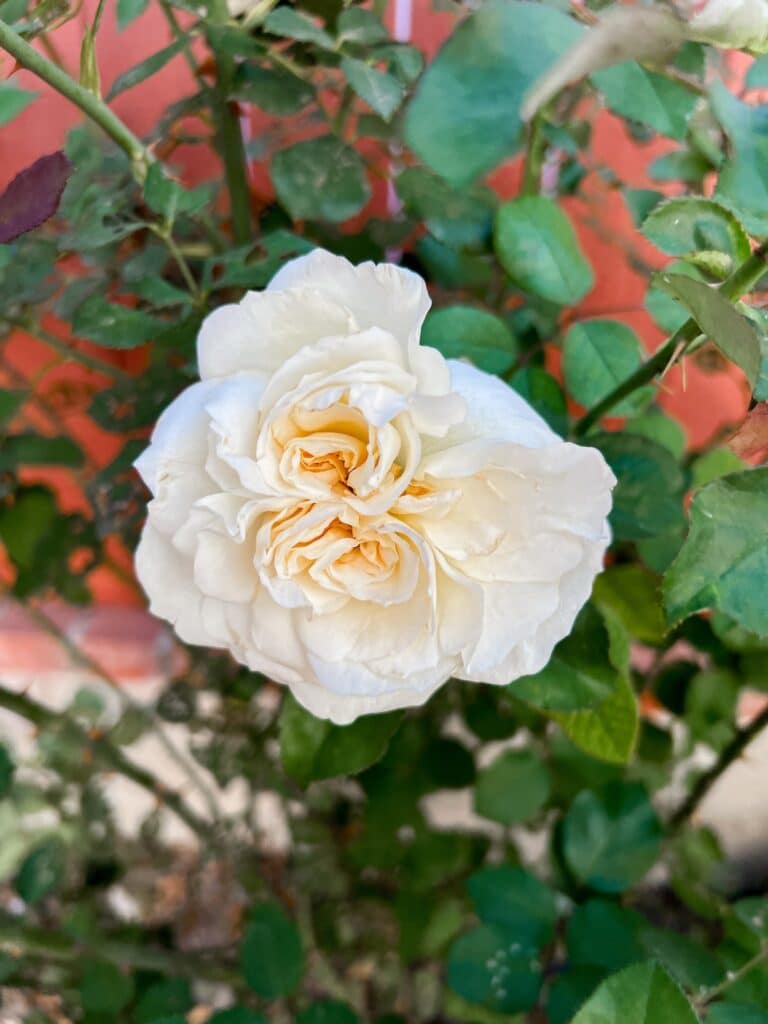
I know mine get very cranky during these months, and the battle against black spot is always a struggle. Deadheading and trimming your roses with strategies for cool, damp weather is important while the marine layer sticks around.
Whether you’re pruning soon or not until January, it’s good to take care of our plants as best we can before that big prune happens. I hope these tips are helpful for you.
Let’s stay connected!
Join my newsletter for 30% off all new releases, regular updates with helpful tips and tricks, first crack at registration for upcoming workshops, exclusive discounts, and more.
Prefer to read without ads? Join my Patreon, which starts at just $1 a month!
Join the A Bee In The Bonnet Facebook Group to participate in knitalongs and other fun community events
Come hang out with me on the A Bee In The Bonnet TikTok
Follow along on the A Bee In The Bonnet Instagram
Get inspired via the A Bee In The Bonnet Pinterest

